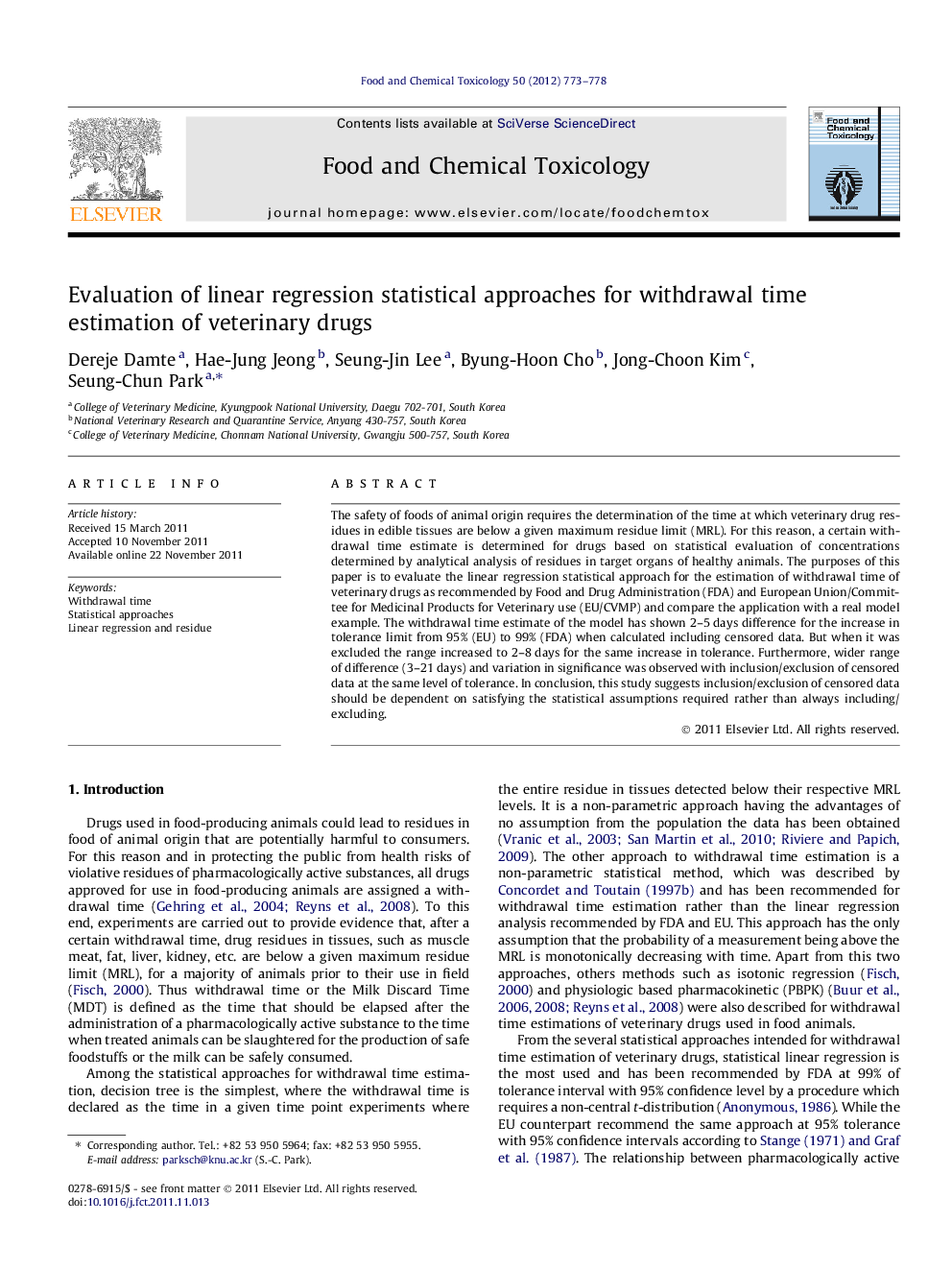| Article ID | Journal | Published Year | Pages | File Type |
|---|---|---|---|---|
| 5853587 | Food and Chemical Toxicology | 2012 | 6 Pages |
The safety of foods of animal origin requires the determination of the time at which veterinary drug residues in edible tissues are below a given maximum residue limit (MRL). For this reason, a certain withdrawal time estimate is determined for drugs based on statistical evaluation of concentrations determined by analytical analysis of residues in target organs of healthy animals. The purposes of this paper is to evaluate the linear regression statistical approach for the estimation of withdrawal time of veterinary drugs as recommended by Food and Drug Administration (FDA) and European Union/Committee for Medicinal Products for Veterinary use (EU/CVMP) and compare the application with a real model example. The withdrawal time estimate of the model has shown 2-5Â days difference for the increase in tolerance limit from 95% (EU) to 99% (FDA) when calculated including censored data. But when it was excluded the range increased to 2-8Â days for the same increase in tolerance. Furthermore, wider range of difference (3-21Â days) and variation in significance was observed with inclusion/exclusion of censored data at the same level of tolerance. In conclusion, this study suggests inclusion/exclusion of censored data should be dependent on satisfying the statistical assumptions required rather than always including/excluding.
⺠The linear regression approach was evaluated for the estimation of withdrawal time. ⺠Increase in tolerance from 95% to 99% show a 2-5 day's difference with censored data. ⺠Calculating excluding censored data 2-8 days difference was observed for the estimate. ⺠Inclusion/exclusion of censored data at same level of tolerance show 3-21 days variant. ⺠Inclusion/exclusion of censored data should depend on satisfying assumptions required.
